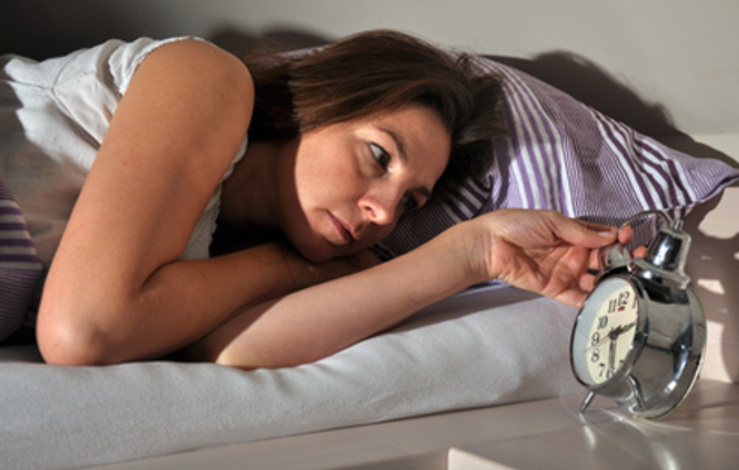The Science Behind Adolescent Sleep Therapy and Circadian Rhythms

Sleep is often seen as a simple, straightforward function of the body. Yet, it is a very complex function of human biology. During the process of development that involves the transition from childhood to adulthood, sleep becomes even more important because of the vital role it plays in the growing brain, regulating mood, learning, and overall health. Unfortunately, many adolescents do not get enough sleep because of academic workloads, distractions from the digital world, and biological factors. Adolescent sleep therapy focuses on the behavior and biological factors caused by a sleep disorder to help adolescents get the rest they need.
Every human being has a biological sleep cycle. The interaction of biological sleep cycles with behavior in adolescents presents unique opportunities to help with mental health challenges. This can be seen in the use of sleep-focused therapy to help adolescents get disorder-adjusted sleep patterns to function optimally and improve mental health.
Why Sleep Matters So Much For Adolescents
Adolescents are not fully developed adults. This transition age involves a unique process of brain development. The absence of adequate sleep during this stage of growth affects the consolidation of learning, formation of memory, and emotional processing. The absence of sleep leads to irritability and mood swings, declines in academic performance, and increases in anxiety and depression.
Adolescents need around eight to ten hours of sleep each night, according to research. Yet, most surveys show they are getting only six or seven hours, at least. This lack of sleep impacts more than just the emotional component. Chronic sleep deprivation impacts the immune and cardiovascular systems. That is why sleep therapy for adolescents aims for the root cause, not just the surface-level poor sleep.
The Biology of Circadian Rhythms
The body is equipped with circadian rhythms, which are internal, 24-hour biological clocks that regulate the sleep and wake cycles. During the teenage years, these clocks start to run later, which means they can stay awake later and struggle to get up in the morning. This is a biological sleep delay, which is not laziness, but is normal and expected. The problem happens when societal obligations like work and school start early.
In addition, homework, extracurricular activities, and screens push the expected sleep time even further. This means adolescents are even more out of sync. Sleep therapy for teens works to realign and put therapy blends together with structural behavioral approaches, and light exposure to sleep therapy.
The Function of Light in Regulating Sleep Patterns
Light has a tremendous impact on circadian rhythms. The brain tells the body to wake up when morning light is present, releases less melatonin, and it is absorbed more. When darkness falls, the brain releases more melatonin and prepares the body to sleep. The problem is that many adolescents are exposed to artificial light during the night from phones, tablets, and computers. This keeps adolescents from producing sleep-inducing melatonin and vastly impairs their sleep cycle.
Light exposure is vital when treating sleep issues in adolescents. Sleep therapists recommend exposure to morning natural light and the elimination of screens around bedtime. After a while, adolescents are able to focus on sleep, and their circadian rhythm is adjusted. This helps sleep therapists establish earlier and more consistent bedtimes and wake-up times, which increases energy and improves mood.
Sleep and Regulation of Emotions
Offset and emotions are closely intertwined. Sleep deprivation causes the brain’s emotional amygdala to be hyperactive while the prefrontal cortex (which controls rational thought) becomes underactive. This is quite problematic for adolescents, as their rational thought will be in a deflective state, thus causing impulsiveness, increased irritability, and emotional stress.
Therapeutic approaches to sleep in adolescents consider both the physical patterns of sleep and the emotional elements that make sleep elusive. Anxiety, depression, and attentional issues can make sleep difficult. The integration of emotional and cognitive therapy, in addition to therapy focused on circadian rhythms, can help adolescents with emotional regulation and cognitive functioning.
See also: Tri Cities Peace and Healing: Comprehensive Mental Health Services
Sleep Therapy Using Behavioral Techniques
Sleep therapy for adolescents involves more than simply telling a teen to go to bed earlier. The therapy involves specific strategies that mesh with the teen’s natural biology. These strategies may include:
- Going to bed and waking up at the same time every day of the week.
- Bedtimes are to be gradually moved earlier in the evening to better fit in with the body’s biological rhythms.
- Limiting caffeine and other stimulants.
- Using mindfulness and relaxation techniques to manage anxiety at bedtime.
The personalization of each of these strategies is the reason therapy works, and this is why the therapy serves the teen well over time.
Impact on School
The most obvious result of adolescents sleeping poorly is the impact it has on school. Sleep-deprived students have a difficult time concentrating, remembering, and problem-solving. Even the most capable students can fall behind when sleep deprivation is interfering with their thinking.
Sleep therapy helps the brain regain its lost power to concentrate and remember things. Research indicates that sleep-improving students feel more awake and do much better in school and in activities outside of school. Such findings further highlight that therapy goes beyond helping students rest. It prepares teenagers for success in all areas of their lives.
Sleep and ADHD in Adolescents
Sleep difficulties are very common in adolescents with attention-deficit disorders. The inability to fall asleep, poor sleep, and exhaustion during the day can aggravate the symptoms of ADHD. With the help of sleep therapy for adolescents, teens with ADHD receive tailored strategies to improve their sleep and attention more effectively.
When the circadian rhythm is in balance, symptoms of hyperactivity, impulsivity, and difficulties with attention become less extreme. Through adolescent sleep therapy, sleep patterns improve while other areas of mental health also benefit.
Long-Term Health Benefits
Healthy sleep patterns begin in one’s teenage years and can lead to positive changes in health years after. Good sleep hygiene creates strong sleep hygiene and mental health. Research connects regular sleep with reduced risks of heart disease, obesity, and mental disorders. Such findings indicate that chronic conditions are much more manageable and accessible to control.
When families choose sleep therapy for their adolescents, teens receive invaluable groundwork for their future wellness. Intervening early allows families to help their teens develop healthy habits rather than poor ones that can lead to chaos and instability in adulthood.
Social and Cultural Influences on Teen Sleep
Any discussion on sleep for teenagers cannot avoid mentioning social and cultural influences. Interminable academic demands and late-night social media encourage activities that compete with adolescents’ biological sleep needs.
Therapy for sleep provides a means to navigate these social determinants. Therapy equips adolescents with coping skills, good time management, and the ability to set healthy control limits on overuse of screens. Therapy helps an adolescent focus on the balance of social engagements and wellness as a practical, obtainable goal and not an impossible choice.
Family Participation in Therapy
Families of teenagers are described as the last to help in the therapy process, when in fact they form a critical part of the support system. Healthy family sleep hygiene, screen control at night, and support of their sleep ritual schedules give adolescents the structure necessary for a thriving developmental experience.
Many therapeutic programs encourage family participation, offering education about circadian rhythms and strategies for creating a sleep-friendly environment. When families are engaged, outcomes are significantly better, as support extends beyond the therapy room into daily life.
Conclusion: Find Restorative Balance with Sleep Therapy
Sleep is growing more critical as a teen learns and grows. From academics to emotions to entire health, issues are multiplying and resulting from misaligned circadian rhythms. Sleep therapy is and remains a crucial tool for helping any adolescent rebalance their sleep.
Therapy focused on circadian sleep cycle disorders allows for and promotes enhanced emotional regulation and healthy functional improvements. Sleep is central to a teenager’s development and should be prioritized.
Those looking for direction on sleep therapy can connect through email, phone, or chat. My Teen Mental Health promotes adolescent well-being by providing services to overcome sleep issues, while also offering life coaching and guidance to help build a promising future.







